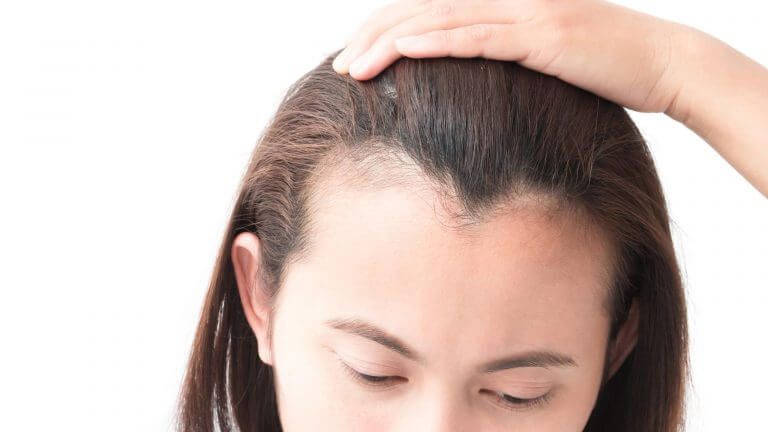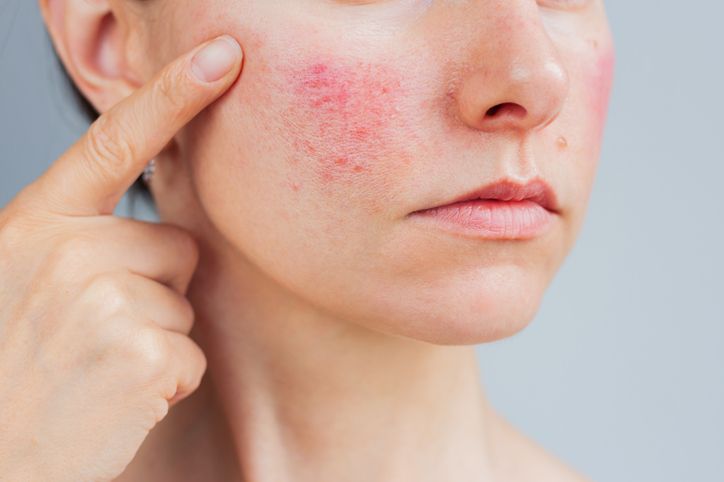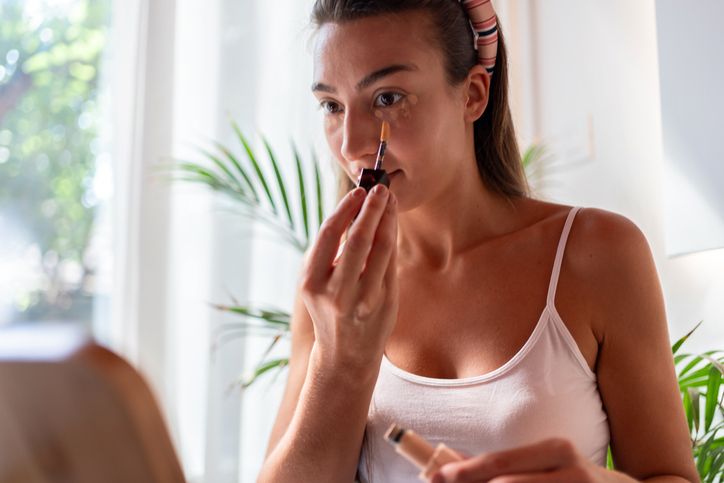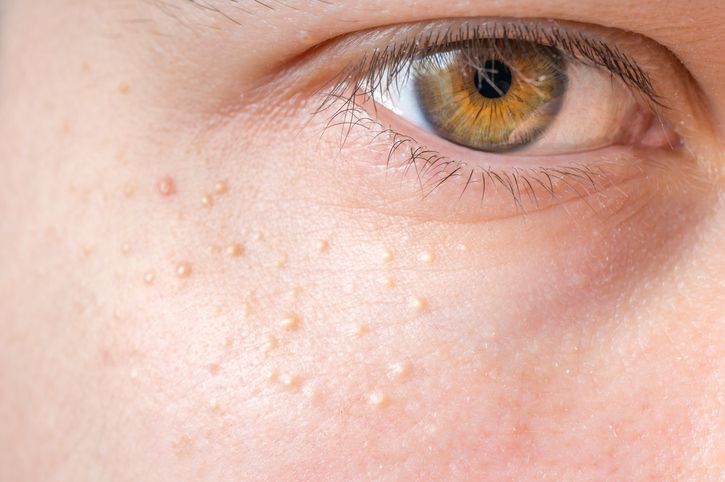- Home
- Trend
- Weight Loss Strategies
- Acne Tips
- Hair Health Information
- Blemish Removal Tips
- Acne Scar Removal Tips
- Muscle Building Techniques
- Intimate Care Tips
- Postpartum Intimate Care
- Eye Bags Wiki
- Tips for Face Slimming
- Secret of Permanent Hair Removal
- Breast Enlargement Tips
- Cure to Snoring
- Marionette Lines
- Skin-Tightening Secrets
Hair regrowth medication is a go-to solution for many dealing with hair loss. However, not all women are suitable candidates for every type of hair loss treatment or drug. In Hong Kong, two commonly prescribed options are the oral drug finasteride and the topical solution minoxidil, such as Propecia and Regro hair growth tonic. While clinical studies have shown both can effectively treat hair loss, they may also come with side effects that affect women's health. No matter the cause of your hair loss, self-medicating with anti-hair loss drugs is not the best approach. If you're experiencing hair thinning, it’s always best to consult a hair specialist to identify the root cause and receive targeted treatment.
Before Taking Hair Regrowth Medications: What Qualifies as Hair Loss?

Many women worry about hair loss and start researching various hair regrowth medications. But these medications are typically intended for those with significant or clinical hair loss. So, how do you know if you really have a hair loss problem?
Hair follicles go through a natural cycle consisting of three phases: growth (anagen), regression (catagen), and resting (telogen). Each follicle’s cycle can last from a few months to several years. During this cycle, it’s normal for some hair to fall out. Most people worry the moment they notice shedding, but it’s important to consider how much hair you’re losing per day. The normal range is around 50 to 100 strands a day. If you're seeing much more than that—clumps of hair falling out, visible scalp, a widening hair part, a receding hairline (M-shaped), thinning at the crown, or even bald spots—then you likely have a hair loss condition that needs attention.
Can Hair Regrowth Medications Treat Common Types of Hair Loss in Women?

Although taking hair loss medication is a standard treatment, women should first identify what type of hair loss they are experiencing before starting any medication.
Type 1: Female Pattern Hair Loss (Androgenetic Alopecia)
Not just men—women can also suffer from androgenetic alopecia, one of the most common types of hair loss in females. Fortunately, there are medications that can help treat this condition.
In women, various factors like genetics, age, and diet can lead to elevated levels of androgens. These androgens convert into dihydrotestosterone (DHT), which attacks hair follicles around the hairline and crown, weakening them. As the follicles shrink, they can no longer hold the hair securely, leading to thinner, weaker strands and eventually hair loss. This commonly results in a receding hairline (M-shape), thinning at the crown ("bald spot"), or a wider hair part.
Since this type of hair loss is hormone-related, the usual treatment involves drugs that inhibit DHT production, such as finasteride and minoxidil-based products. These help reduce DHT’s attack on the hair follicles.
Type 2: Telogen Effluvium (Stress-Related Hair Loss)
This occurs when a larger number of hair follicles enter the resting phase, leading to increased shedding. In most cases, telogen effluvium does not require medication.
Normally, about 10% of your hair is in the resting phase. When this proportion increases—due to causes like pregnancy, illness, stress, rapid weight loss, or extreme dieting—hair shedding becomes more noticeable. While this condition typically resolves on its own, addressing the underlying cause is key.
Type 3: Alopecia Areata
Commonly known as “spot baldness,” this condition presents as round, bald patches on the scalp ranging from coin-sized to much larger. These areas are often completely hairless and highly visible.
The exact cause is unclear, and few medications are proven effective for this type of hair loss. It’s believed to be an autoimmune or inflammatory response in which the body attacks its own hair follicles, possibly triggered by stress or emotional upheaval. Currently, corticosteroid injections are used to reduce inflammation and suppress the immune response, potentially helping regrow hair in the affected areas.
免費體驗
F8 Hair Regrowth Treatment
1 Minute Self-Registration
Date should not be before minimal date
Understanding Two Key Ingredients in Hair Loss Medication: Finasteride & Minoxidil
When talking about hair regrowth medications, two names frequently come up: Finasteride and Minoxidil. These are the main ingredients used to treat androgenetic alopecia and other types of hair loss.
To understand how these medications work, we first need to understand how androgenetic alopecia happens. In the body, testosterone is converted into DHT (dihydrotestosterone) by the enzyme 5-alpha reductase. DHT then targets genetically sensitive hair follicles, typically those on the hairline and crown, weakening them and leading to hair loss.
• Finasteride works by blocking 5-alpha reductase, thereby reducing DHT levels and protecting hair follicles from DHT’s harmful effects. This helps preserve and regrow hair.
• Minoxidil, on the other hand, works by dilating blood vessels and improving circulation in the scalp, delivering more nutrients to the hair follicles. This helps extend the growth phase of the hair cycle and reduces shedding.
While both are effective, they are used differently:
• Finasteride is taken orally in tablet form, and results typically appear after 3–6 months of consistent use.
• Minoxidil is applied topically as a solution, foam, or lotion. It comes in 2% and 5% concentrations, with women advised to use only the 2% version. Like finasteride, noticeable effects require at least 3–6 months of use.
Common Hair Loss Medications on the Market
Finasteride and minoxidil are the active ingredients, but several branded products use them:
1. Propecia (Finasteride)
Approved by the FDA in 1998, Propecia is one of the first oral medications for androgenetic alopecia. Each tablet contains 1mg of finasteride, taken once daily. It reduces the conversion of testosterone into DHT, helping protect hair follicles and reduce hair loss.
Studies suggest users may see reduced hair shedding after 3 months, and new hair growth between 6 and 12 months. However, stopping the medication may cause hair loss to resume within a year.
2. Dutasteride (Avodart)
Dutasteride is a newer oral medication not yet approved in Hong Kong but available in places like Taiwan. Originally used for treating enlarged prostate, it’s now used off-label for hair loss. Some studies suggest it may be more effective than finasteride.
While finasteride only inhibits type II 5-alpha reductase, dutasteride blocks both type I and II, offering potentially stronger DHT suppression and better results. It’s often recommended for those who haven’t responded well to Propecia. However, like Propecia, results are not permanent—stopping treatment may cause hair loss to return.
3. Regro Hair Tonic (Minoxidil)
Topical treatments are another popular option. Currently, minoxidil is the only approved topical hair regrowth ingredient. Many hair tonics and lotions on the market contain minoxidil to treat androgenetic alopecia.
Originally a high blood pressure drug, minoxidil was found to improve scalp circulation and promote hair growth. It helps hair follicles get better blood supply and nutrients, extending the growth phase of the hair cycle and reducing shedding.
Minoxidil products usually come in 2% and 5% concentrations. The 5% version is recommended only for men or those with severe hair loss; women should use the 2% version. To apply, simply use it on a dry scalp and let it air dry. As with finasteride, stopping use may lead to a recurrence of hair loss.
Side Effects of Hair Regrowth Medications
While the medications mentioned above can effectively improve hair loss, they are still pharmacological substances and may pose health risks or trigger side effects. Therefore, it is essential to consult a professional hair specialist before using them to ensure they are appropriate for your physical condition.
Side Effect 1: Hair Loss Recurrence
All hair regrowth medications share this common downside—the effects are not permanent. These drugs do not eliminate the root causes of hair loss; they only slow the weakening of hair follicles. As such, once you stop taking or applying the medication, hair loss is likely to return.
For instance, finasteride works by suppressing 5-alpha reductase, reducing the conversion of testosterone to DHT and thereby decreasing attacks on the hair follicles. However, it does not eliminate 5-alpha reductase or DHT entirely. So if you stop taking finasteride, DHT production resumes and begins damaging follicles again, leading to renewed hair loss.
Minoxidil operates differently—by improving scalp blood flow through vasodilation. But if discontinued, blood circulation reverts to its previous state, hair follicles receive less nutrition, and androgenetic alopecia symptoms may return.
Side Effect 2: Hormonal Imbalance
Hair regrowth medications target androgen levels, which means they can disrupt the body’s hormonal balance. This is especially relevant for women. Although these medications can improve female pattern baldness, they may also cause hormonal side effects like acne, irregular periods, or mood swings due to the disruption of natural hormone levels.
Side Effect 3: Allergic Reactions or Scalp Sensitivity
Even though finasteride and minoxidil are approved for treating hair loss, allergic reactions are still possible. Individuals with known allergies to these substances should avoid them. Oral medications may also contain other ingredients that can trigger sensitivities, making it essential to consult a doctor before use.
Topical minoxidil may also cause scalp irritation. Besides the active ingredient, many formulations include additional compounds like caffeine or saw palmetto to enhance effectiveness. These added ingredients, however, may cause scalp irritation, itching, redness, or flaking, especially in sensitive individuals.
Side Effect 4: Risk of Birth Defects
Studies have shown that women who are planning to conceive, are currently pregnant, or are breastfeeding should avoid using hair regrowth medications. These drugs may cause birth defects or interfere with fetal development. There is also a risk that active ingredients could be transmitted through breast milk, potentially affecting the infant’s health. Women in these stages should avoid both oral use and even contact with crushed or powdered forms of these medications to prevent accidental absorption.
Side Effect 5: Liver Function Impairment
Oral medications like finasteride should be used cautiously by those with liver conditions. Since the liver is the primary organ for detoxification, all drugs are metabolized there. If someone with liver dysfunction takes hair regrowth medication—especially long-term—it could strain the liver further and lead to complications.
免費體驗
F8 Hair Regrowth Treatment
1 Minute Self-Registration
Date should not be before minimal date
Alternatives to Hair Regrowth Medications
Many people struggle to choose between medication and hair transplant surgery. In reality, the two are completely different treatment options. While medication works chemically, hair transplants involve physically relocating healthy hair follicles to balding areas.
Alternative 1: Hair Transplant Surgery
Hair transplant procedures extract healthy follicles from the scalp and implant them into thinning or bald areas to promote new hair growth.
There are two main techniques today:
• FUT (Follicular Unit Transplantation): Involves removing a strip of scalp to harvest follicles. This often results in a large, noticeable scar and a longer recovery time, making it less common now.
• FUE (Follicular Unit Extraction): Extracts follicles individually using a small punch tool. Scars are minimal and less visible post-healing, and recovery is quicker. FUE has become the more popular method in recent years.
Alternative 2: Hair Growth Supplements
Some people prefer hair supplements over medication due to concerns about side effects. These supplements are usually marketed as being made with natural ingredients and claim not to burden the body or scalp.
Ingredients often include vitamins, black sesame, caffeine, saw palmetto, and fo-ti (He Shou Wu)—substances believed to nourish the scalp or stimulate hair growth. However, while these supplements don’t contain active pharmaceutical agents, there is currently insufficient clinical evidence proving their effectiveness. Results can vary from person to person, and excessive intake of certain nutrients could potentially lead to health issues.
Alternative 3: Low-Level Laser Therapy (LLLT)
Medical-grade low-level laser treatment uses non-invasive light technology to penetrate the scalp, activate follicles, and stimulate the dermal papilla and blood capillaries. It helps restore scalp health and promotes hair growth without causing trauma to the skin.
For those looking to avoid medications, Perfect Medical’s F8 Hair Regrowth Treatment offers a good alternative. This treatment uses 650nm LLLT (Low-Level Laser Therapy) to deliver potent growth factors deep into the scalp, rejuvenating cells from the inside out. It not only revives dormant follicles but also strengthens blood vessels and regenerates dermal papilla cells, helping to stimulate visible hair growth in a short period.
The F8 therapy also deeply purifies hair follicles, balances scalp oil levels, and removes chemical residues. Beyond hair loss treatment, it can also be used for routine scalp care and prevention.
So if you want a non-invasive, painless option for treating and preventing hair loss, F8 laser therapy is a promising choice. Plus, you can get a free full-session trial by simply registering. Remember, medications aren’t the only way to treat hair loss—F8 therapy is also an effective alternative. Try it today!
Book Now: Perfect Medical F8 Hair Regrowth Treatment免費體驗
F8 Hair Regrowth Treatment
1 Minute Self-Registration
Date should not be before minimal date
FAQ

What types of medication are used to treat hair loss?
Finasteride and minoxidil are the most common options for treating androgenetic alopecia. Finasteride reduces the concentration of 5-alpha reductase, lowering DHT levels and protecting hair follicles. Minoxidil improves blood circulation in the scalp and nourishes follicles. Finasteride is taken orally and requires 3–6 months of continuous use to see results, while minoxidil comes in liquid, foam, or lotion form (women should only use the 2% concentration).
What hair regrowth medications are suitable for women?
Women are generally recommended to use only the 2% concentration of minoxidil. The 5% version is typically reserved for men or those with severe hair loss. Oral medications like finasteride are not advised for women due to potential hormonal disruptions.
Does using minoxidil have side effects?
Yes. All hair regrowth medications may lead to side effects. For example, minoxidil promotes hair growth by enhancing scalp blood circulation. If you stop using it, the circulation returns to baseline, and hair loss may recur.
Can vitamin supplements treat hair loss?
Many people opt for supplements instead of medication to avoid health risks. Vitamins are a common choice. While these supplements claim to be natural and gentle, there’s limited scientific evidence to support their effectiveness. Results vary from person to person.
Are hair transplants better than hair regrowth medications?
Both are viable but fundamentally different approaches. Transplants involve surgically relocating healthy follicles to bald areas. While effective, they may leave scars or carry the risk of failure. Despite technological advances, it’s usually recommended to try medications first and consider surgery only if there’s little improvement.









